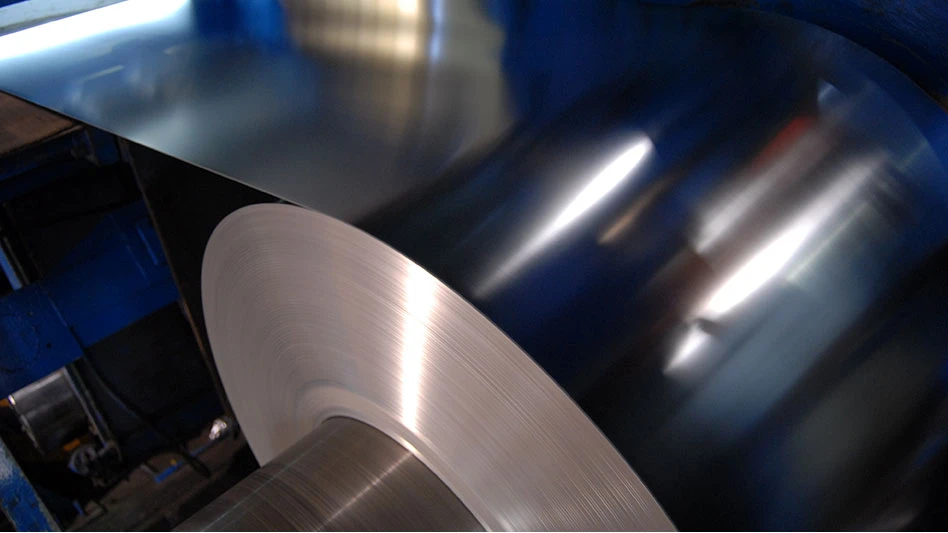Metals price volatility has hampered nonferrous scrap dealers working to maintain margins against changing London Metal Exchange price levels.
Countering a downward trend, copper markets and London Metal Exchange (LME) prices received a slight boost in early October after commodities producer Glencore Plc announced production cutbacks.
However copper prices soon lost some of those gains after news from China’s National Bureau of Statistics that the country’s consumer prices for the year were up by slightly less than expected.
The drops are reminiscent of the longer trend for this year. The LME price of copper dropped below the $5000 mark in September.
Meanwhile Will Adams, head of research for the commodities research service Fastmarkets (www.fastmarkets.com), says the copper market was expected to be in a supply surplus both this year and next.
“There have been a lot of supply disruptions,” he adds. While supply disruptions are not out of the ordinary, Adams says those faced in recent weeks have been large and unexpected, helping to add a positive vibe to the market.
Even so, the copper market is strongly linked to the continuing economic slowdown in China, the No. 1 consuming country for copper scrap.
“People feel fairly pessimistic about growth rates in China,” says Adams. “We still see it slowing down and that’s the main reason why prices are under pressure.”
Adams also observes that the devaluing of the Chinese yuan in August has damaged the demand outlook for nonferrous metals.
For aluminium, Adams says, the excess supply in the market, rather than a lack of demand, continues to weigh on prices. The level of Chinese exports of semi-finished aluminium has been one of the conditions still suppressing that market, Adams observes. He also describes a common belief that LME prices will need to fall further to trigger more cuts.
“We’ve seen some, but I think the market now expects further cutbacks.”

Adams says while exports of aluminium from China have slowed a bit, likely because of lower prices, a number of new Chinese smelters were in the pipeline and would likely be entering the market.
“I think we’re going to see exports become quite a swing factor for the market, and I think it will actually keep a lid on prices,” he says.
One peculiarity of today’s aluminium markets, Adams says: producers in countries with weaker currencies have been able to benefit from the strong U.S. dollar.
“The ironic thing is that in the U.S., there is a deficit of aluminium,” he says. “It puts the pressure on producers to make cutbacks probably in North America, because they get the dollar price.”
Commenting on nonferrous scrap markets, Alexandra Weibel-Natan, CEO of the France-based trading company Manco SAS, says the general downward trend in nonferrous commodity prices this year manifested as LME price drops of 20% for copper and aluminium and 40% for nickel over the same period.
“Even though scrap prices cannot be directly linked to LME, all material has lost value,” Weibel-Natan says. “It’s difficult for scrap dealers to accept such a value drop of their stock.”
For that reason, she adds, many have chosen to wait for better prices relative to what they paid.
“At the end, very little quantity is being offered,” she says.
Weibel-Natan says European demand for nonferrous scrap also is not strong, particularly considering the fluctuation of the U.S. dollar-to-euro exchange rate during 2015, which she notes has seemed to stabilize more recently.
“Scrap customers are very reluctant to buy large quantities. In addition, she says that European mills have large stocks, so they purchase only limited quantities.
While smelters have been buying very cautiously and at high discounts, Weibel-Natan observes that refinery inventories have finally seemed to decrease.
“Lately, they are in demand again,” says Weibel-Natan. “They decreased discounts and are willing to give prices for all quantities for scrap from the very low grade to the very high grade.”
Weibel-Natan says that for copper and aluminium scrap, prices from European consumers are better than those offered from export markets.
“However for stainless steel I think the market is still mostly Indian,” she says.
In general though, Weibel-Natan describes high discounts for scrap even though LME prices are low, an unconventional situation.
“In this very tense market, margins are very low, especially when compared to the last few years’ margins,” she says.
Weibel-Natan says the current market situation is to blame for this anomaly. “The LME is moving up and down every day,” she says. That makes it difficult for customers to change their discounts from one day to the next. “Discounts are not moving,” she says, noting the situation has gotten worse in recent weeks.
Commenting on the recently volatile LME, Weibel-Natan observes prices seem to be affected by changing dollar-to-euro exchange rates.
“In the past, the LME in dollars was not fluctuating with moves in the exchange rate.” However now, and for the past few months it has, while the euro has become the safe haven currency, she says.
Latest from Recycling Today
- AISI, Aluminum Association cite USMCA triangular trading concerns
- Nucor names new president
- DOE rare earths funding is open to recyclers
- Design for Recycling Resolution introduced
- PetStar PET recycling plant expands
- Iron Bull addresses scrap handling needs with custom hoppers
- REgroup, CP Group to build advanced MRF in Nova Scotia
- Oregon county expands options for hard-to-recycling items





